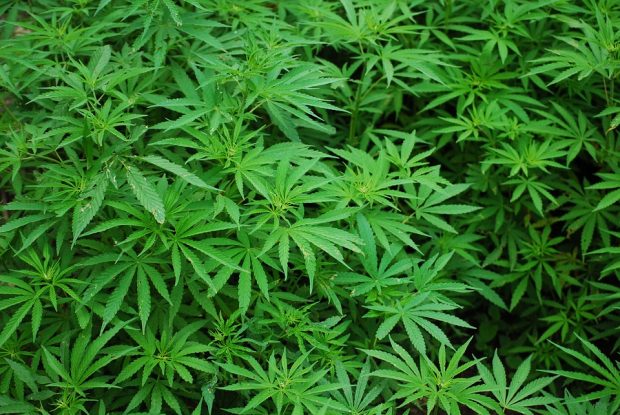
2016 study in the American Economic Review estimates how legalizing marijuana nationally would impact tax returns and consumption.
by David Trilling | August 8, 2016 | marijuana, public health
You are free to republish this piece both online and in print, and we encourage you to do so with the embed code provided below. We only ask that you follow a few basic guidelines.
by David Trilling, The Journalist's Resource
August 8, 2016
The issue: Since Colorado became the first state to legalize recreational marijuana in 2012, initiatives to bring pot out of the shadows have spread rapidly across the United States. Almost half of states now sanction marijuana for medical purposes – even though it remains illegal under federal law. American public opinion also has shifted toward acceptance. In 1969, according to the Pew Research Center, 84 percent of Americans thought the drug should be illegal; by 2015, that number had fallen to 44 percent.
Legalization raises a number of questions with policy implications. For example, how can it be taxed? In 2015, Colorado raised $135 million in taxes and fees from legal sales. Another important question: Will states that stop arresting people for selling or having marijuana save money on policing and reduce their incarceration rates? Some 620,000 people were arrested for marijuana possession in 2014, according to the FBI; young minority men were disproportionately targeted. Will more children take to smoking weed? As laws relax and the stigma associated with marijuana recedes, people may use more.
An academic study worth reading: “Marijuana on Main Street? Estimating Demand in Markets with Limited Access,” published in American Economic Review, August 2016.
Study summary: Economists Liana Jacobi of the University of Melbourne and Michelle Sovinsky of the University of Mannheim look at how limited access affects usage rates among Australians of different ages. The Australian data is especially useful because it includes statistics on accessibility and prices. Recreational marijuana is currently illegal in Australia, though some states began introducing medical marijuana laws in 2016. As in America, marijuana is the most commonly used illicit drug in Australia.
The authors look at the role accessibility plays in usage and how tax revenues are affected when marijuana is regulated like alcohol and sold to people above the age of 21. They also examine how taxation can curb use among youth. Jacobi and Sovinsky extrapolate their analysis to include the United States, a country with similar cultural behaviors and economies.
Findings:
Other resources:
The number of American cannabis users is rising rapidly. According to an August 2016 Gallup Poll, 13 percent of Americans say they use the drug, up from 7 percent in 2007. Slightly older data from The National Survey on Drug Use and Health, published by the U.S. Department of Health and Human Services, say over 22 million Americans aged 12 or older have used marijuana in the past month. That is 8.4 percent of the population.
The National Institutes of Health (NIH) publishes research on the health impact of cannabis consumption.
Legalization in Colorado has been a closely watched experiment. The state’s Department of Revenue publishes its tax receipts from marijuana sales on a monthly basis.
The American Civil Liberties Union reports that black people are almost four times more likely to be arrested for marijuana possession than whites, even though both groups use the drug at roughly the same rate.
There are a number of advocacy groups working both sides of the legalization debate, including some funded by the cannabis industry. The Marijuana Policy Project lobbies for legalization and regulation. It updates a database of ballot initiatives around the country. Smart Approaches to Marijuana is an anti-legalization lobby group.
CannabisWire.com and High Times magazine are among the news outlets that cover the growing legal marijuana business.
LEAP – Law Enforcement Against Prohibition – is a body of police and other law enforcement officials promoting legalization. It argues that prohibition has failed and distracts police from fulfilling their duties to the public.
Professor Mark Kleiman of New York University has written extensively about criminal justice and marijuana.
Other research:
A 2016 paper in Preventative Medicine analyzes news coverage of recreational marijuana policy and reports that opponents of legalization most often argue about public health concerns, but that stories about opposition rarely mention public health research. Proponents of legalization most often use arguments on reduced criminal justice expenditures and increased tax revenues.
A 2015 study published in Alcoholism: Clinical and Experimental Research explores how marijuana legalization impacts alcohol consumption.
A 2015 study by the RAND BING Center for Health Economics sees an association between medical marijuana and the lower use of addictive opioids as pain medication; it also reports fewer opioid-related deaths. At the same time, the paper finds a correlation between the availability of medical marijuana and higher rates of recreational marijuana use.
There is a growing debate between federalism and states’ rights when it comes to marijuana legalization. The federal government continues to classify cannabis as a Schedule I drug, like heroin and cocaine. That means cultivators, distributors and dispensaries that sell marijuana legally under state laws have severely restricted access to the banking system, which is more often regulated at a federal level. On these restrictions, see the 2015 article “Cooperative Federalism and Marijuana Regulation” published in the UCLA Law Review and the 2014 article “Banks, Marijuana, and Federalism” in Case Western Reserve Law Review.
Keywords: weed, pot, dope, edibles, hemp, Reefer Madness, THC, cannabidiol, CBD, Charlotte’s Web
David Trilling was a staff writer from 2016 to 2018. He came to Journalist’s Resource from Columbia Business School, where he was a Knight-Bagehot Fellow. David worked for 10 years in the former Soviet Union and Middle East, most recently as The Economist‘s Central Asia correspondent and as an editor at EurasiaNet.org. He has written for Foreign Affairs, Foreign Policy, The Nation, The Guardian and other publications. His photographs have appeared in dozens of periodicals and can be viewed on his website: davidtrilling.com. Twitter: @dtrilling.

We gathered research to help journalists explain how presidential debates influence voters’ decisions. These papers look at aggressive behavior on stage, the likelihood candidates’ performance will change voters’ minds and other topics.

The study, published in BMC Public Health, reveals an overwhelming reliance on law enforcement narratives, missing deeper insights into the root causes and potential solutions to gun violence.

To help journalists contextualize coverage of school board elections, we spotlight research on who votes in these elections, the role of teachers unions and how new board members can influence school segregation, funding and test scores.